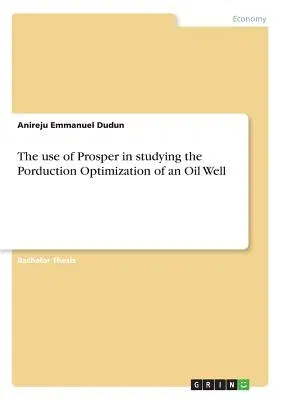Bachelor Thesis from the year 2014 in the subject Engineering - Power
Engineering, grade: A, University of Benin, course: Petroleum
Engineering, language: English, abstract: Crude oil production is a
major requirement to sustaining the well begins of any petroleum
company. This will entail the effective placement of all facilities and
equipment; surface or subsurface in order to achieve optimum volume of
crude oil production, this is usually called production optimization. In
this study, the software prosper was utilized to case study well J-12T
Well J-12T, a natural producer was producing at its peak oil rate at
6137 STB/d at 0% water-cut by mid-1973 but since then production has
been on the decline due to increasing water-cut and decreasing reservoir
pressure. But to date, the well is producing at an oil rate of 1431
STB/d at a water-cut of 50%.The VLP/IPR data were matched to well test
flow rate measurement with a deviation of about 0,0534%, thereafter a
short and long term optimization plan scenarios such as sensitivity runs
on the well head pressure, tubing sizes, and gas lift technique
respectively etc for the well, were simulated in PROSPER and then
evaluated. The results of this work suggests that; by lowering the
Christmas tree pressure from 180 to 120psi the well's life can be
extended to 70% water-cut, also increasing the tubing size from 2,992"
to 3,958" ID is also recommended. The gas lift method was found to be
more economical as it can produce up to a maximum economic water cut of
90% with optimum gas injection rate of 3.3MMscf/d and oil production
rates will increased from 1431 STB/d to about 3000 STB/d at 50%
water-cut.


